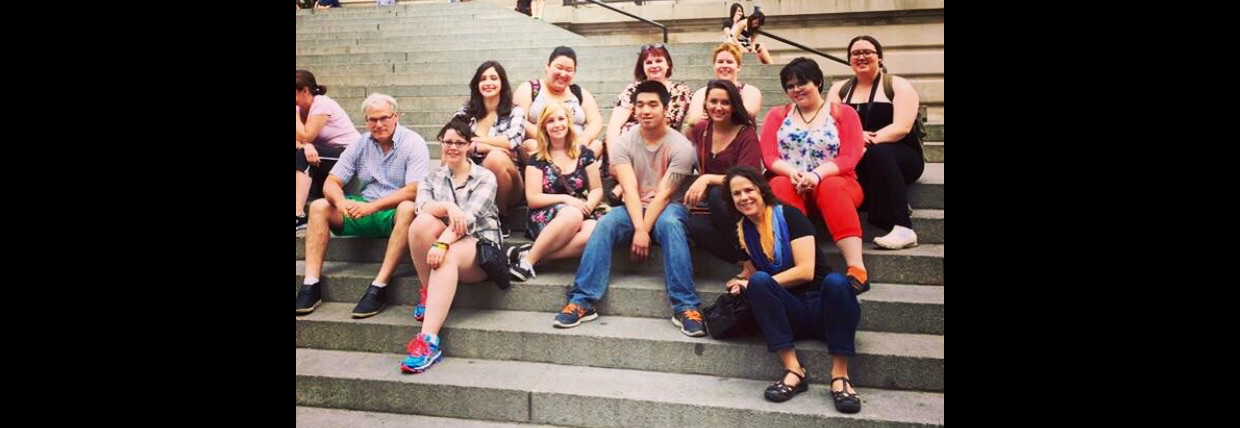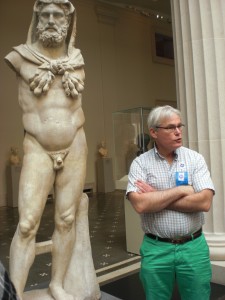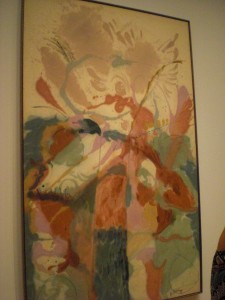by Brit Hemphill.
After some much-needed rest following a busy day of ACTing UP and visiting the Stonewall Inn, we met downstairs in the lobby to further digest yesterday’s experiences. We spoke about the inability to comprehend the body count of the AIDS epidemic and the frustrations we share with the government for their severe benign (some might argue against benign) neglect. Then we broke for a short break before making our way to our first event of the day.
The weather continued to be a pain—spitting rain all day and a bit chilly for early June, but we persevered and took two subways (we’re pretty much pros at following Lowell and Dr. Pitts now) to the Lesbian Herstory Archives in Brooklyn.
There we met Deb Edel—one of the founding members of the Lesbian Herstory Archives. She was a sweet, charming woman in stripes who welcomed us with cookies and tea, instantly making us feel at home. We settled into a room full of books from floor to ceiling, accented with artifacts and photographs scattered about.
Deb shared with us a brief history of the Lesbian Herstory Archives. The Archives started in 1974 by a group of dedicated individuals who were not librarians by trade, but had spent much time in libraries. In the early 1970’s, to investigate the history of the LGBT world, one would have to basically out themselves to a librarian to receive material.
Many thought this was too much exposure and found the white-glove policies of handling archives to be troublesome. That’s where this strong group of mostly gay women and men came in. Deb told us that they “made a very deliberate decision for this (the Lesbian Herstory Archives) to be a people’s history to be touched and felt.” The purpose of the Archives is for one to “get their hands dirty” and be able to explore international lesbian history in a hands-on type of way.
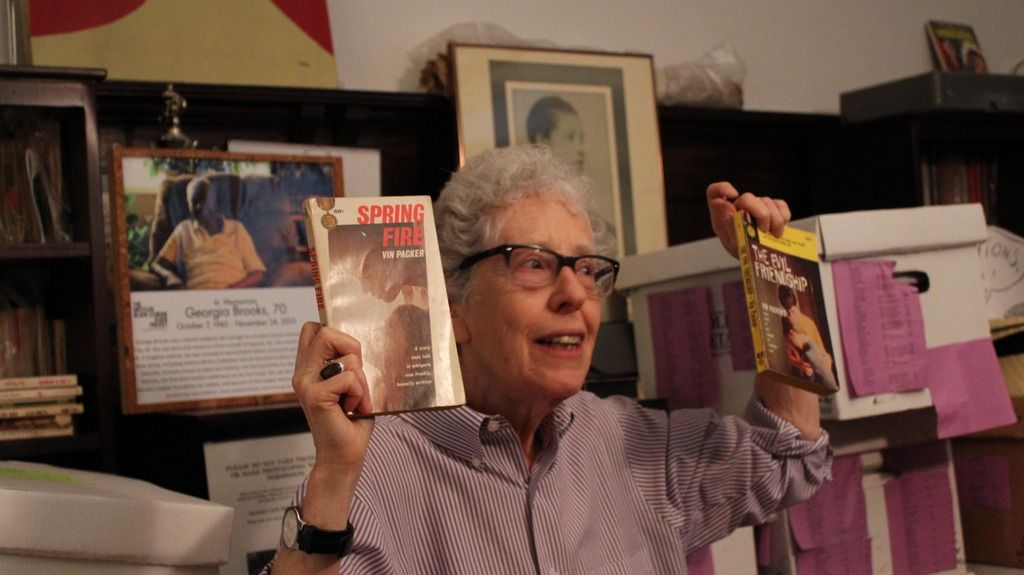
We were then given a tour of the Archives, which spanned a beautiful three-story building (the top floor is the living quarters for someone who takes care of the building). Room after room, closet after closet, and hallway after hallway were filled with materials. Many of the materials are filed away by the woman’s first name to help dismantle the patriarchal implications of identifying a woman by her last name.
I was amazed by the sheer amount of archived material the Lesbian Herstory Archives has. There wasn’t just non-fiction and fiction books—there were biographies, photographs, interviews, periodicals, clothing, buttons, posters, a piece of a strap-on (yup), and much more. One of their current projects is digitizing 3,000 cassette tapes of interviews and recordings of women’s events from all over. These women work hard to continually improve and add to the Archives, and are all volunteers. Their sheer goodwill and dedication impressed me.
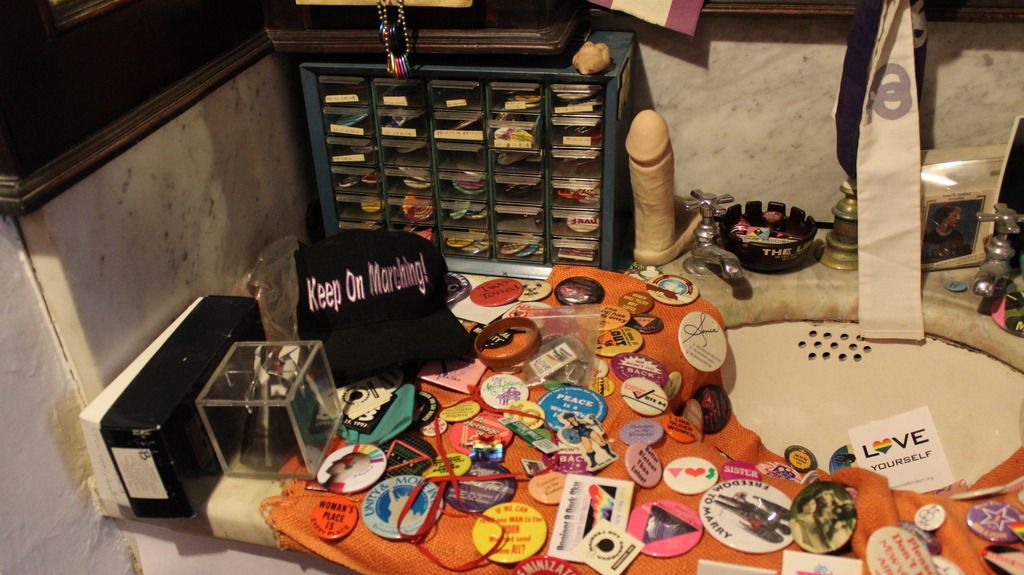
After our tour, we had the opportunity to poke around the Archives and do some of our own research. I took a look at the endless ACT UP materials, while others looked at lesbian pulp fiction, sexology, witchcraft, and much more. Any and all subjects were covered in the Archives.
Following the Archives, we were all set free for the day to do as we pleased. Some of us took naps to gather up our strength from yesterday and tomorrow’s big day. Others shopped, went for some casual drinks at the Stonewall Inn, or explored the city on their own. Now, as I write this twenty past ten pm, we are feverously working on signs for tomorrow’s action. The excitement in the room is palpable.
